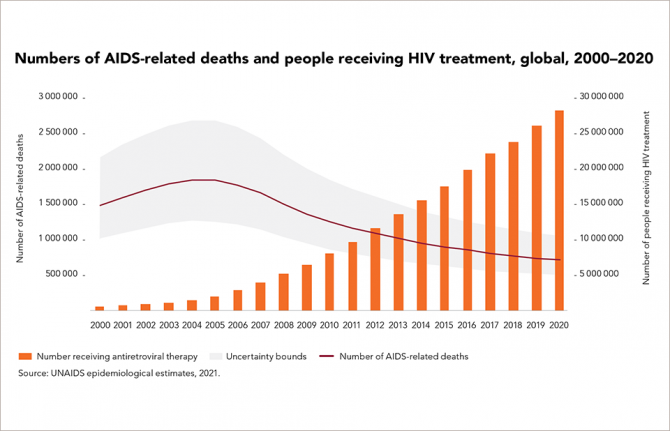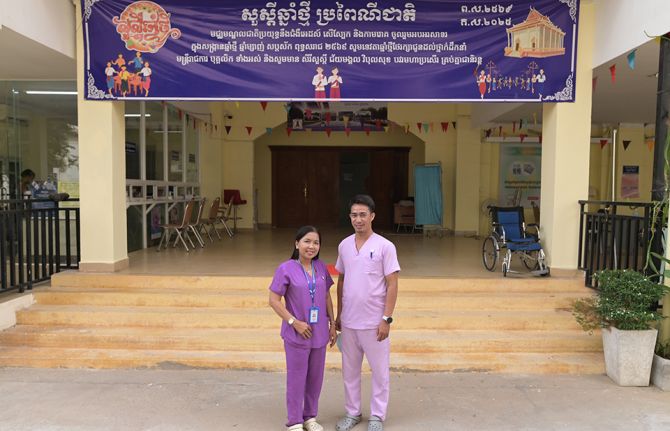

Update
Global roll-out of HIV treatment has saved millions of lives
06 September 2021
06 September 2021 06 September 2021The 90–90–90 targets, agreed by the United Nations General Assembly in 2016, called for the vast majority of people living with HIV to be tested, start treatment and have the HIV within their bodies reduced to undetectable levels by 2020. Achieving these targets means that a minimum of 73% of people living with HIV have suppressed viral loads, which helps to keep them healthy and prevents the further spread of the virus.
At the end of 2020, 84% of people living with HIV knew their HIV status, 73% were accessing antiretroviral therapy and 66% were virally suppressed. Among the 37.7 million people living with HIV globally in 2020, an estimated 27.5 million people living with HIV were on treatment—a number that has more than tripled since 2010, but that is still short of the 2020 target of 30 million.
The global roll-out of HIV treatment has saved millions of lives: an estimated 16.5 million AIDS-related deaths have been averted since 2001. In 2020, there were 680 000 deaths from AIDS-related causes, a decline of 58% from 2001 to 2020. At least 40 countries are on track to achieve a 90% reduction in AIDS-related mortality by 2030, including nine countries in eastern and southern Africa.



